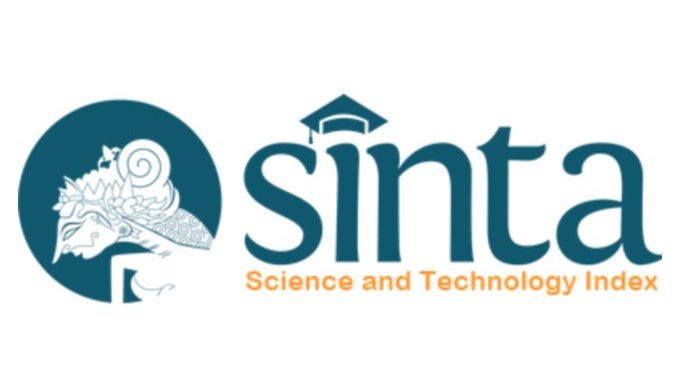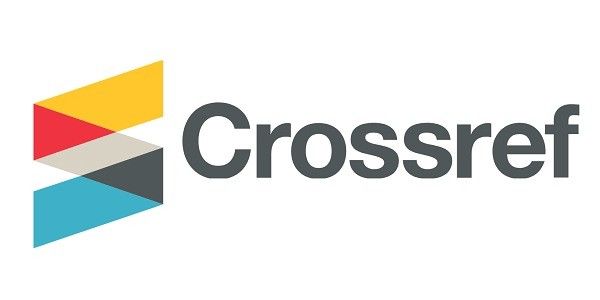Profile of Pediatric Nephrotic Syndrome in Wahidin Sudirohusodo Hospital, Makassar, Indonesia
DOI:
https://doi.org/10.55175/cdk.v46i3.494Keywords:
Children, Makassar, nephrotic syndromeAbstract
Introduction: Nephrotic syndrome is a common and important pediatric chronic renal disease, characterized by massive proteinuria, hypoalbuminemia, edema, and hypercholesterolemia. This study was to assess the profile of pediatric nephrotic syndrome at Wahidin Sudirohusodo Hospital Makassar over a 7-year period. Methods: A retrospective study on hospitalized nephrotic syndrome patients at pediatric nephrology ward in Wahidin Sudirohusodo Hospital Makassar from January 2011 to December 2017. Demographic, clinical, and laboratory data were extract from medical records. results: Total 142 children with nephrotic syndrome who fulfilled the inclusion criteria were analyze. Age at onset ranged from 1.4 to 17.5 years (mean 8.5 years), the majority (66.2%) was 5 year-old and above, predominantly boy (66.2%) with a boy to girl ratio of 1,95:1 and well-nourished (56.3%). Upper respiratory infections were observed in 36.6% cases. The predominant clinical signs and symptoms were edema (100%), hypertension (26.8%). Patients with relapse were 56.3%, and the mortality was 2.12%. The prevalent laboratory findings were microscopic hematuria (50.7%), massive proteinuria (100%), hypoalbuminemia (100%), hypercholesterolemia (100%), and elevated serum creatinine (9.9%). conclusion: The profile of pediatric nephrotic syndrome at Wahidin Sudirohusodo Hospital Makassar was similar to typical children nephrotic syndrome and did not significantly differ from other studies.
Introduksi: Sindrom nefrotik adalah penyakit kronis anak yang sering dan penting di seluruh dunia, ditandai oleh proteinuria masif, hipoalbuminemia, edema, dan hiperkolesterolemia. Studi ini untuk menentukan profil sindrom nefrotik anak di rumah sakit Wahidin Sudirohusodo Makassar selama 7 tahun. Metode: Penelitian retrospektif pada pasien sindrom nefrotik di bangsal nefrologi anak rumah sakit Wahidin Sudirohusodo Makassar dari bulan Januari 2011 sampai dengan Desember 2017. Data diambil dari rekam medik terdiri dari data demografi dan temuan klinis dan laboratorium. Hasil: Total 142 pasien sindrom nefrotik anak yang memenuhi kriteira inklusi dianalisis. Umur pasien saat onset mulai dari 1,4 sampai dengan 17,5 tahun dengan rerata umur 8,5 tahun. Kebanyakan berumur 5 tahun atau lebih (66.2%) didominasi pasien laki-laki (66,2%) dengan rasio jenis kelamin 1,95:1. Status gizi baik (56,3%). Infeksi saluran napas atas ditemukan pada 36,6% kasus. Gejala dan tanda klinis utama adalah edema (100%), hipertensi (26,8%), relaps pada 56,3% kasus, dan 2,12% pasien meninggal. Temuan laboratorium utama adalah hematuria mikroskopik (50,7%), proteinuria masif (100%), hipoalbuminemia (100%), hiperkolesterolemia (100%), dan peningkatan kreatinin serum (9,9%). simpulan: Profil sindrom nefrotik anak di rumah sakit Wahidin Sudirohusodo Makassar pada umumnya serupa dan tidak berbeda bermakna dari penelitian lain
Downloads
References
Nash MA, Edelmann CM, Bernstein J, Barnett HL. The nephrotic syndrome. Volume 11.Pediatric Kidney Disease, 2nd ed. Boston: Little Brown and Co.1992 .p. 1247-66
Bagga A, Mantan M. Nephrotic syndrome in children. Indian J Med Res. 2005;122:13-28
Trihono PP, Alatas H, Tambunan T, Pardede SO. Konsensus tata laksana sindrom nefrotik idiopatik pada anak, UKK nefrologi IDAI. 2nd ed. Jakarta: Badan Penerbit Ikatan Dokter Anak Indonesia; 2008
Burgstein JM. Nephrotic syndrome. In: Behrman RE, Kliegman RM, Jenson HB, editors. Nelson textbook of pediatrics. 18th ed. Philadelphia: Saunders WB; 2008. p. 2430-42
National High Blood Pressure Education Program Working Group On High Blood Pressure in Children and Adolescents. The fourth report on the diagnosis, evaluation, and treatment of high blood pressure in in children and adolescents. Pediatrics. 2004;114:555-76.
Diven SC, Travis LB. A practical primary care approach to hematuria in children. Pediatr Nephrol. 2000; 14:65–72
Ghasemi A, Azimzadeh I, Afghan M, Momenan AA, Bagheripour F, Azizi F. Pediatric reference values for serum creatinine and estimated. Arch Iran Med. 2015;18(11):753 – 59.
Department of Health and Human Services Centers for Disease Control and Prevention National Center for Health Statistics. Hyattsville, Maryland, May 2002 DHHS Publication No. (PHS) 2002-1696: 2000 CDC Growth Charts for the United States: Methods and Development) (WHO. WHO Global Database on Childhood Growth and Malnutrition. Department of Nutrition for Health and Development (NHD) Geneva, Switzerland. http://www.who.int/nutrgrowthdb/en/.)
Wirya IGNW. Sindrom nefrotik. In: Alatas H, Tambunan T, Trihono PP, Pardede SO, editors. Buku ajar nefrologi anak. 2nd Ed. Jakarta: Balai Penerbit FKUI; 2004 .p. 381- 426.
Sahana KS. Clinical profile of nephrotic syndrome in children. J Evolution Med Dental Sci. 2014;3:863-70
Chahar CK, Bundella B, Purohit M. Quantitation of proteinuria by use of single random spot urine collection. J Indian Med Assoc. 1993;991:86-7
Shastri NG, Shastri NJ, Shendurnikar N, Nayak U, Kotwcha PV. Quantitation of proteinuria by protein creatinine ratio. Indian Pediatr. 1994;31;334-7.
GAP Nilawati. Profil sindrom nefrotik di ruang perawatan Anak RSUP Sanglah Denpasar. Sari Pediatri 2012;14 (4):269-72.
Safaei A, Maleknejad S. Maleknejad. Spectrum of childhood nephrotic syndrome in Iran: A single center study. Indian J Nephrol. 2009;19(3):87-90
Kumar J, Culati S, Sharma P, Sharma RK. Histopathologial spectrum of childhood nephrotic syndrome in Indian children. Pediatr Nephrol. 2003;18:660-75.
Asinobi AO, Gbadegesin RA, Ogunkunle OO. Responsiveness of young children with nephrotic syndrome in Nigeria. Ann Trop Pediatr. 2005;25:199-203.
Kamal F.A, Al-lawama M, Khatib FA, Sleiman MJ, Bulos NK. The clinical profile of infections in childhood primary nephrotic syndrome. Jordan Med J. 2011;45(4):303- 7
ISKDC. NS in children: Prediction of histopathology from clinical and laboratory chararcteristic at time of diagnosis. Kidney Int. 1978;13-2:159-65
Pais P, Avener ED. Idiopathic nephrotic syndrome In: Kliegman, Stanton, St.Geme, Schor, Behrman, editors. Nelson text book of pediatrics 19th ed. India: Elsevier; 2012.p 1804.
Siegal NJ, Golberg B, Krassner CS. Long term follow up of children with steroid responsive nephrotic syndrome. J Pediatr. 1972;81;251-8.
Paola M, Moreno R, García GP. Characteristics of idiopathic nephrotic syndrome at an unusual age in a tertiary-level pediatric hospital in Guadalajara, Jalisco, México. Bol Med Hosp Infant Mex 2011;68(4):250-6.
Ozkaya N, Cakar N, Ekim M, Kara N, Akkok N, Yalcinkaya F. Primary nephrotic syndrome during childhood in Turkey. Pediatr Int. 2004;46:436-8.
Bircan Z, Yilmaz AY, Katar S, Yildrim M. Childhood idiopathic nephrotic syndrome in Turkey. Pediatr Int. 2002;44:608-13.
Ahmadzadeh A, Derakhshan A, Hakimzadeh M, Zolfigol A. Idiopathic nephrotic syndrome in Iranian children. Indian Pediatr. 2008;45:52-3.
Sudihardjo W, Prasetyo RV, Umijati S. Clinical profile of children with steroid-sensitive idiopathic nephrotic syndrome relapsing in the first year at Dr. Soetomo Hospital, Surabaya. Folia Medica Indones. 2012;48(4): 180-5
Okoro BA, Okafor HU. Childhood nephrotic syndrome in Enugu, Nigeria. West Afr J Med. 2000;19:137-41
Adedoyin OT, Gbelee HOD, Adeniyi A. Childhood nephrotic syndrome in Ilorin. Nig J Paed. 2001;28:68-72
Kevin DM, David BK, William ES. Pediatric steroid- resistant nephrotic syndrome. Curr Probl Pediatr. 2001; 31:275-307
Downloads
Published
How to Cite
Issue
Section
License
Copyright (c) 2019 https://creativecommons.org/licenses/by-nc/4.0/

This work is licensed under a Creative Commons Attribution-NonCommercial 4.0 International License.





















